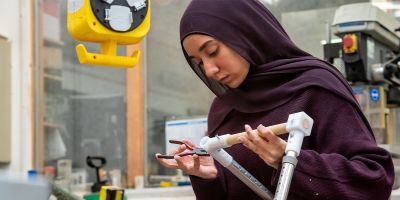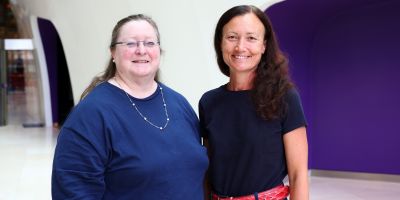Massive solar storms provide new insights for archaeology and environmental science

Recent discoveries of extreme ancient solar storms have the potential to revolutionise radiocarbon dating techniques and better understand the Earth's system.
In an invited perspective published in Nature, a team led by Professor Tim Heaton, Professor of Applied Statistics at Leeds, shed light on extreme solar storms that occurred in our past. These produced massive spikes in radiocarbon levels in tree rings, providing unprecedented accuracy in dating archaeological and environmental records.
One of the strongest solar storms in documented history occurred in 1859. This Carrington Event created a huge aurora that lit up most of the sky and caused telegraph systems across Europe and North America to fail and spark into flames. However, from radiocarbon evidence we know that much more extreme solar storms have happened further back in our past.
The perspective reviews the research done to discover such extreme solar storms, and discusses how they can help us better understand the world in which we live – through improved dating of archaeological and environmental events, and learning about the global carbon cycle, ocean and atmospheric circulation, and solar physics.
Detecting extreme solar storms is made possible by studying radiocarbon levels in ancient tree rings. Radiocarbon is a naturally occurring radioactive isotope that is constantly being produced in the atmosphere. When these solar storms take place, radiocarbon production levels spike far above natural levels. This leaves a clear signature in the tree rings. Uncovering this unique fingerprint allows researchers to pinpoint the occurrence of these storms and to date objects more precisely.
Radiocarbon is a phenomenal tool to understand the past
The first discovery that the Sun was capable of creating such massive storms was made in 2012 by Fusa Miyake, a cosmic ray physicist at Nagoya University, Japan, who detected a radiocarbon spike in Japanese tree rings from AD 774. Since then four other extreme solar storms have now been discovered, occurring in AD 993, 660 BC, 5259 BC and even 7176 BC – while several other possible events are still being investigated.
Professor Heaton said: “Radiocarbon is a phenomenal tool to understand the past – not just to date archaeological objects but also to understand how the Earth actually works, from the critical processes within our Sun to those hidden deep in our oceans.”
If such an extreme solar storm was to occur today, it could well have disastrous impacts on our highly technological society damaging our satellites, communications networks and global electricity grids. Understanding the frequency with which they occur, and their risks, is therefore critical.
However, these storms are not only a threat. The extreme radiocarbon levels produced during such events offer scientists an invaluable tool for archaeological and environmental research. For instance, radiocarbon dating has been used to determine the precise construction dates of historic sites such as the Viking settlement at L’Anse aux Meadows in Canada and the Latvian lake fortress at Lake Āraiši. This technique allows researchers to date sites and events with far greater accuracy than before, sometimes down to the exact year.
As scientists continue to investigate other possible extreme solar storms from the distant past, the discoveries are expected to further enhance radiocarbon dating techniques, opening new doors to our understanding of history and helping society prepare for the potential threats posed by future solar storms.
Further information
- Image caption: Polar aurora taken from the Sodankylä Geophysical Observatory, Finland; image credit: Thomas Ulich, SGO.
- For further information, contact Faculty Communications Manager Matt Gardner via M.D.Gardner@leeds.ac.uk.




